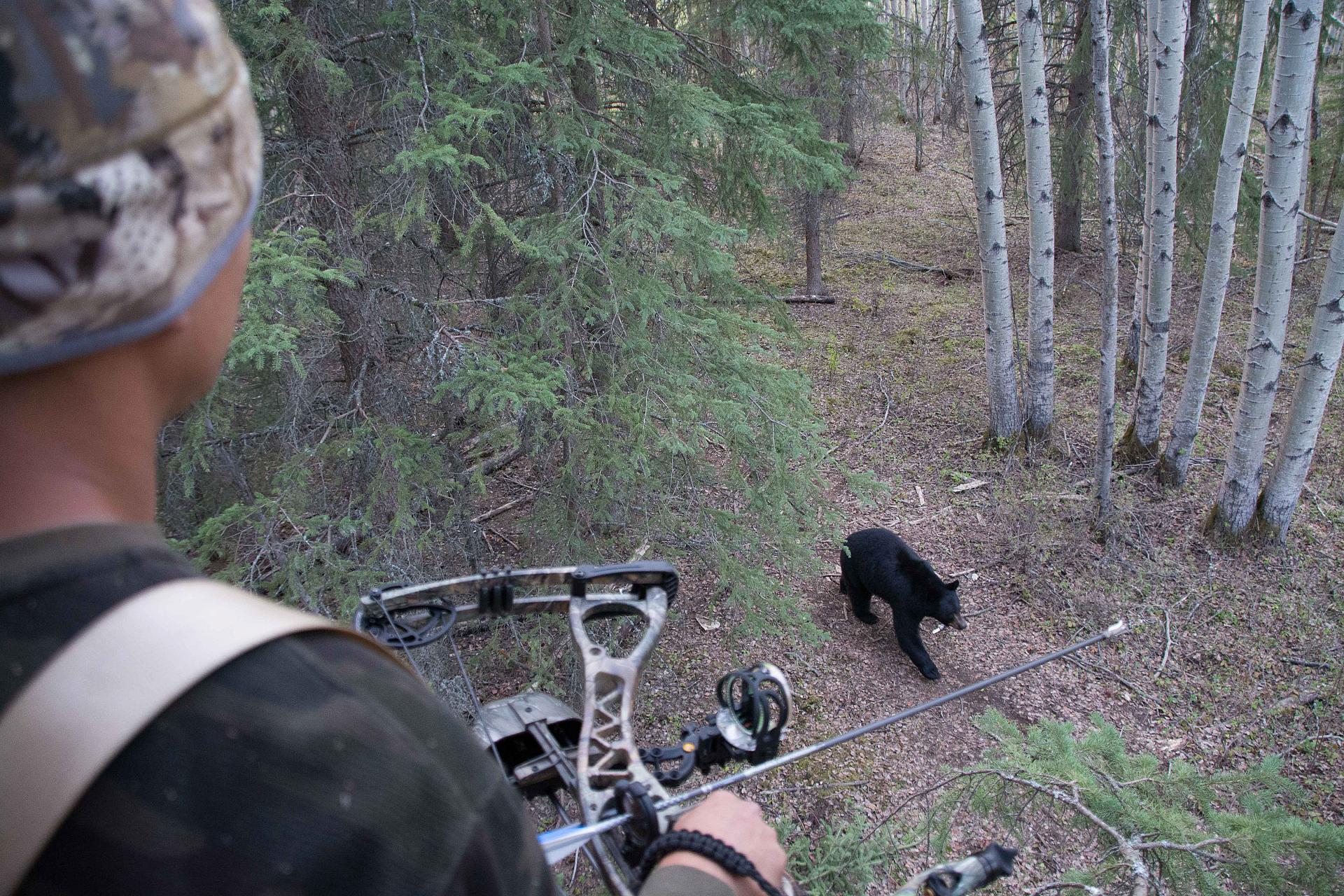Are You Doing These 5 Bowhunting Musts?
Avoid Disappointment with Stringent Preparation Before Animals Get Close
Advertisement
Bowhunting requires getting close to animals, very close! So close you will not need binoculars to size them up. Or so close, you think they will hear your heartbeat. To capitalize on opportunities you need as little movement or noise as possible during those exciting situations. Over the past 20 years I have developed a routine when I setup for a bowhunting shot. Whether it is an ambush, a call or rattle setup, alone or with a partner, I do the same thing time after time to ensure I maximize on my opportunities. This goes for big game or small game like coyotes.
Bow and Arrows Ready
First things first, get your bow ready. After all, you are trying to kill something so you need to have your weapon ready to fire. Nock an arrow. I learned this lesson the hard way many years back. I was watching a couple bucks feed on some cut alfalfa about 100 yards in front of me while I waited for them to finish and start towards their bedding area. Unbeknownst to me at the time, deer progress from feeding to their bedding area without delay. After eating, they immediately headed straight towards me, rendering me motionless and unprepared for the opportunity to come. They eventually passed me at 5 yards and all without an arrow nocked.
Advertisement
Bowhunting seldom allows for second shots, but when they occur, time is of the essence. A good quiver holds arrows tight and secure – features sub-optimal for grabbing another one quickly, quietly and easily. These days, I use detachable quivers and keep them close by with another arrow partially removed allowing for a quick reload of my compound or traditional bow. Crossbows are not so quick and quiet to reload unless you have a silent mechanical cocking device.
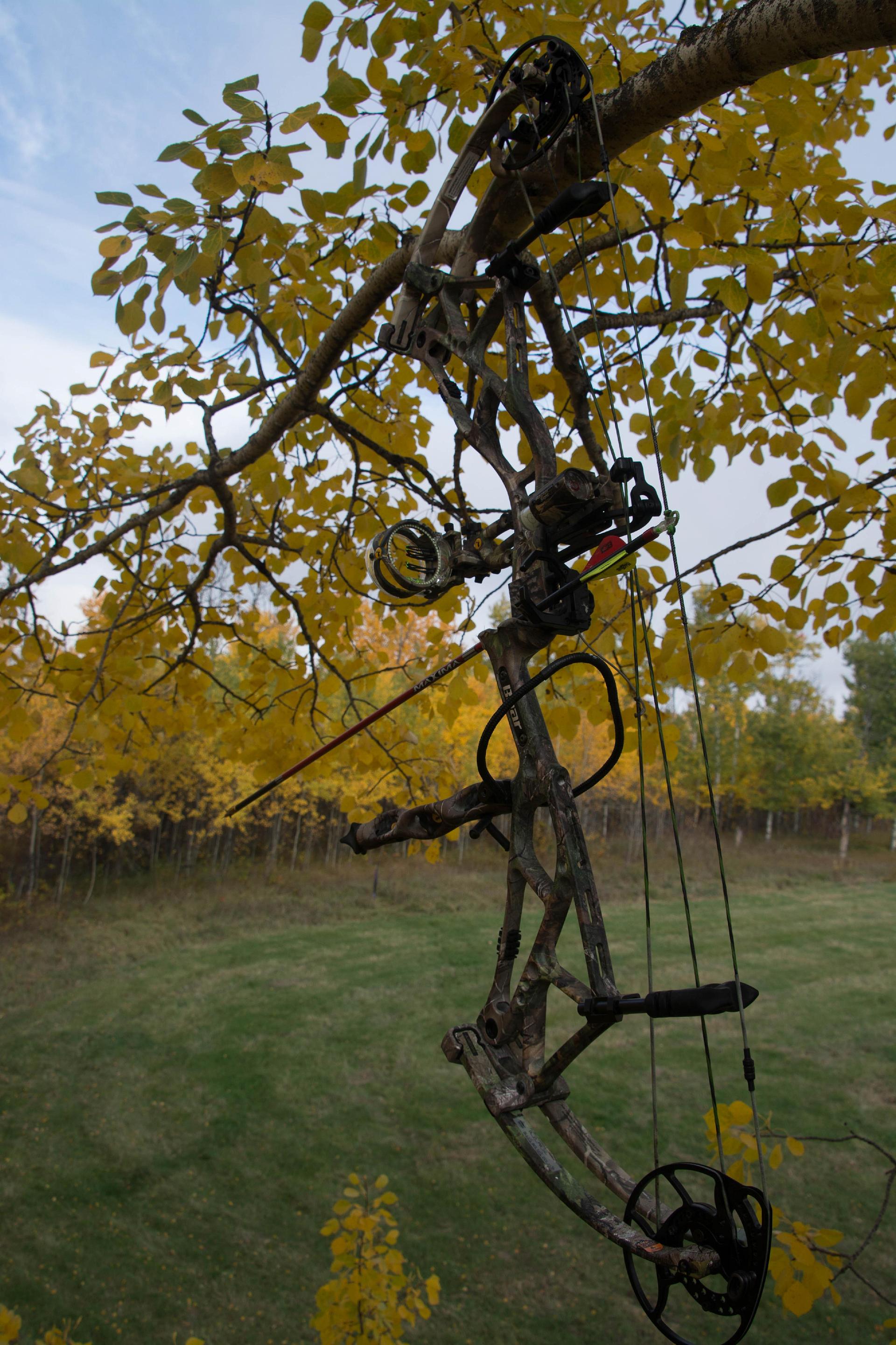
Pick a Spot
You cannot move when an animal in view is coming in closer, so choose a spot with the wind in your favour and as many shooting lanes as possible. Get comfortable in your spot with your bow ready. Now practice aiming and anchoring your bow. Go through every shot scenario and ensure all this set on your bow like the rest, the arrow complete with broadhead, the sight pins or scope and the peep sight (if applicable). Also listen for any foreign or strange noises when you are doing this.
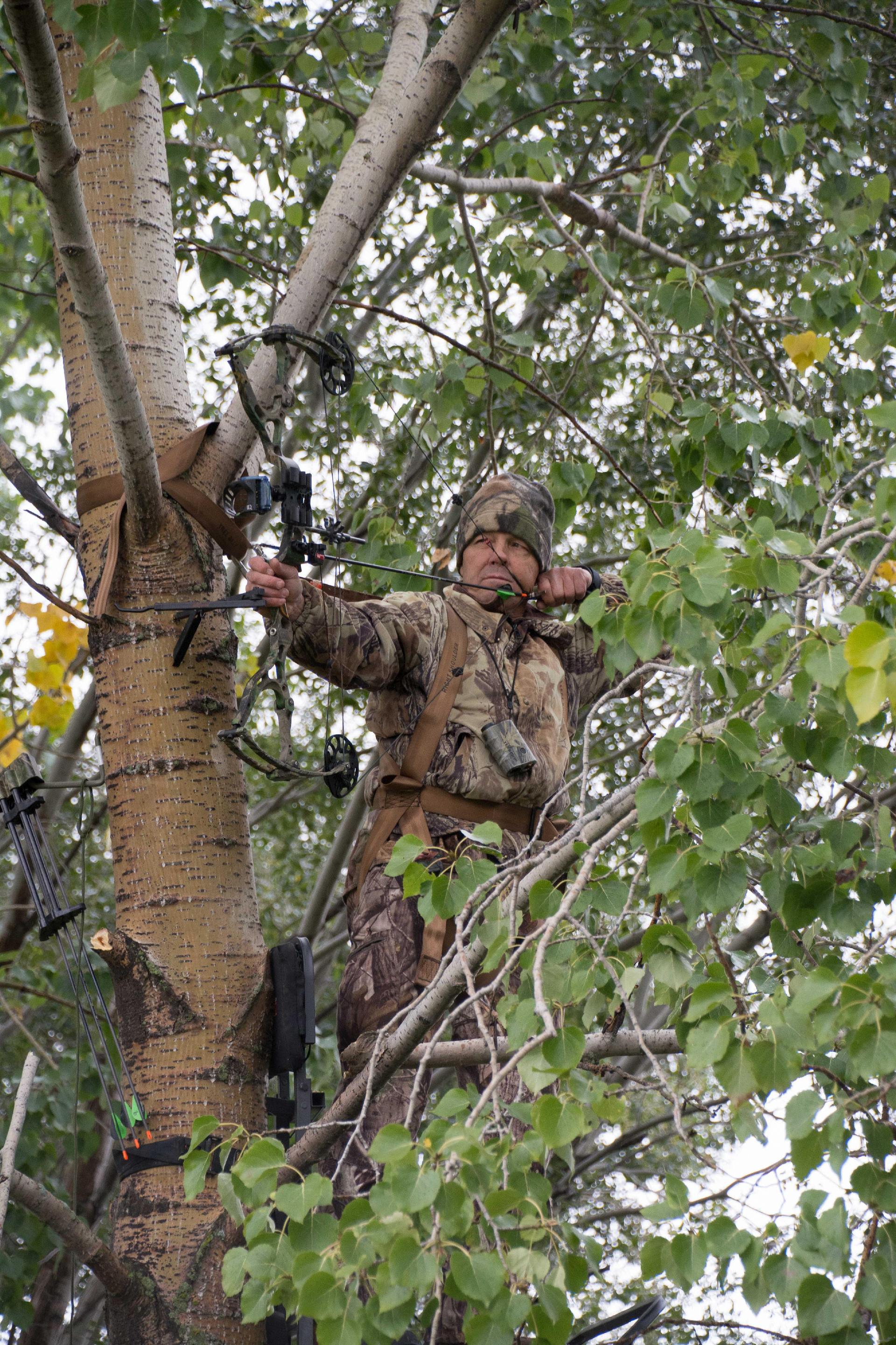
Practice aiming after picking a spot to bowhunt from.
Advertisement
Clear Known Shots
Arrows just do not have the velocity or momentum of bullets so remove any twigs, tree limbs or tall seasonal vegetation in your arrows flight path. Once you have clear shooting lanes, range the distances and remember them. I range objects like large trees, stumps or deadfall, all preferable with constrast so they work until last light. I prefer to have a perimetre ranged at 25 metres so I know if the animal is within those landmarks I use my top pin/marker. Then I choose another perimetre 10 metre further so I only need to estimate the distance between 25 and 35 metres. Of course, this does not always work exactly in 10 metres increments.
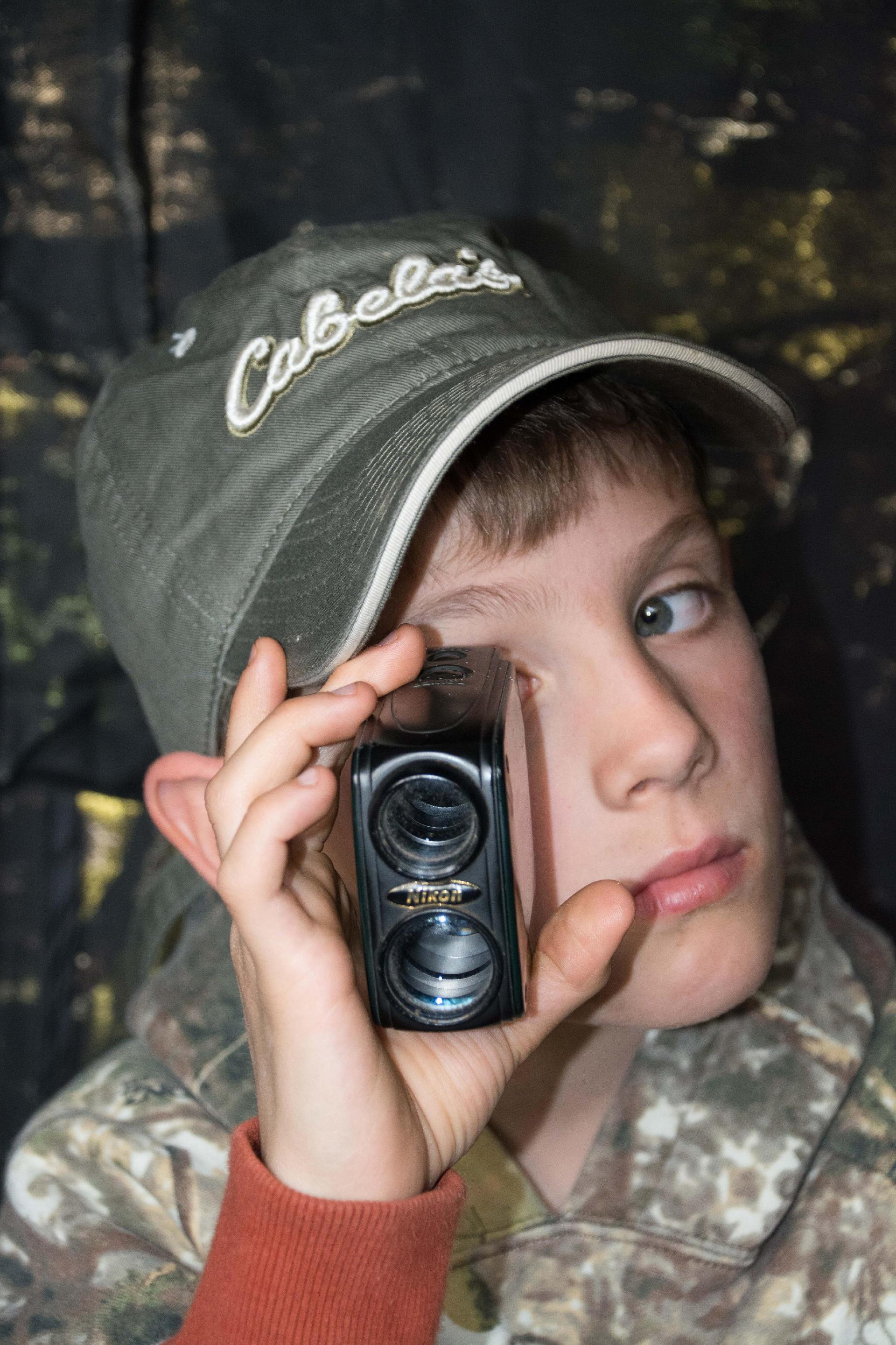
Ranging distances beforehand only leaves remembering to choose to correct pin when the animal arrives.
Pockets Preferences
Once I am ready to shoot, I get myself organized. Because I am a right handed shot I put my range finder in my right jacket pocket. This way I can hold my bow in one hand, and range with the other – not recommended, but sometimes required to be sure on longer shots with no reference points. I keep my calls accessible but not in the way of my shooting. Calls that hang around your neck are particularly problematic when shooting a vertical bow so ensure they are tucked away from your string. My pack is nearby, but not in the way and I have all the gear I need out of it, like rattling antlers or scent wicks.
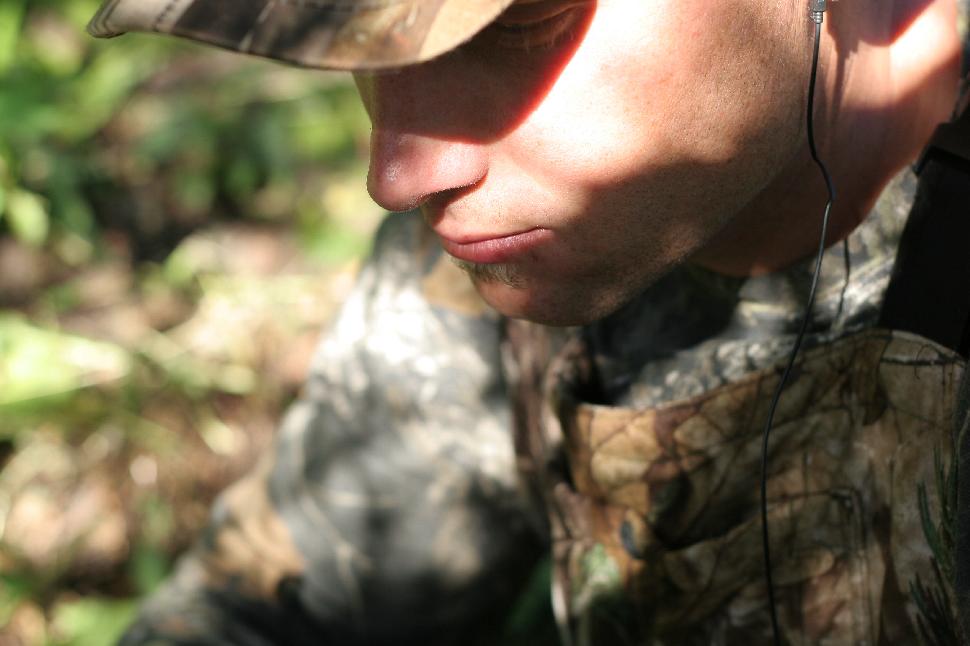
Radios are a great tool (where legal) but be cautious of anchoring your bowstring to your face.
Visualize and Refresh
While setup and actively bowhunting I frequently visualize animals coming into range and look for additional trails/areas that I might have missed when setting up (and range them accordingly). For any shooting lanes that I ranged earlier I refresh my memory by trying to remember and then check those answers with my range finder, keeping confidence in my distance measurement before shooting opportunities arise.
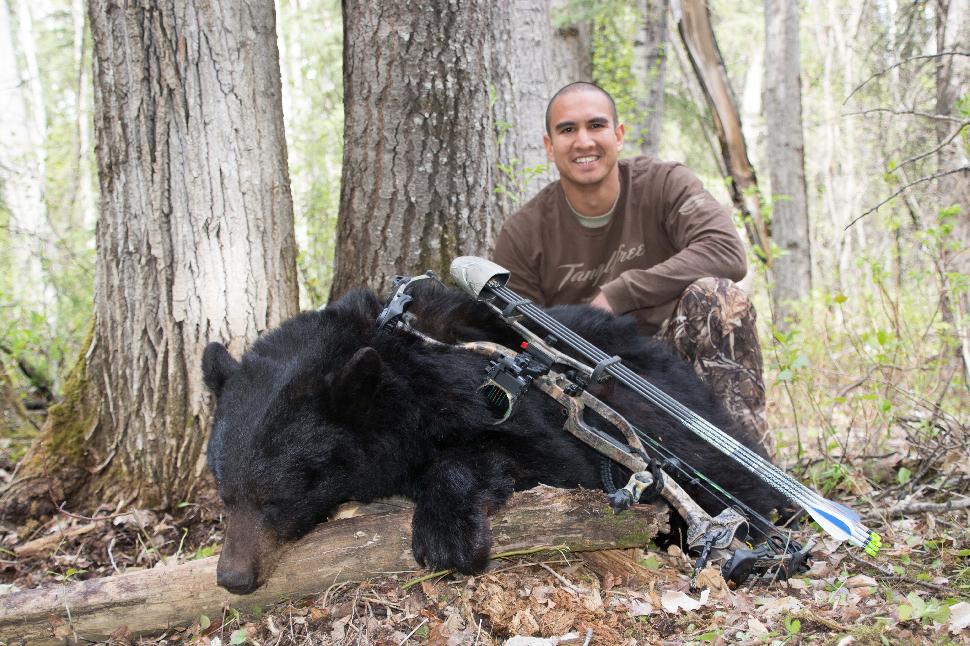
The author guided this first time bowhunter to his first big game animal by teaching him the above routine, ensuring he was prepared to make the shot, despite being overly excited.
There is enough to do to make a clean ethical shot on an animal in close. By following the above proactive routine, you will find yourself more confident and relaxed when the moment of truth arrives.

